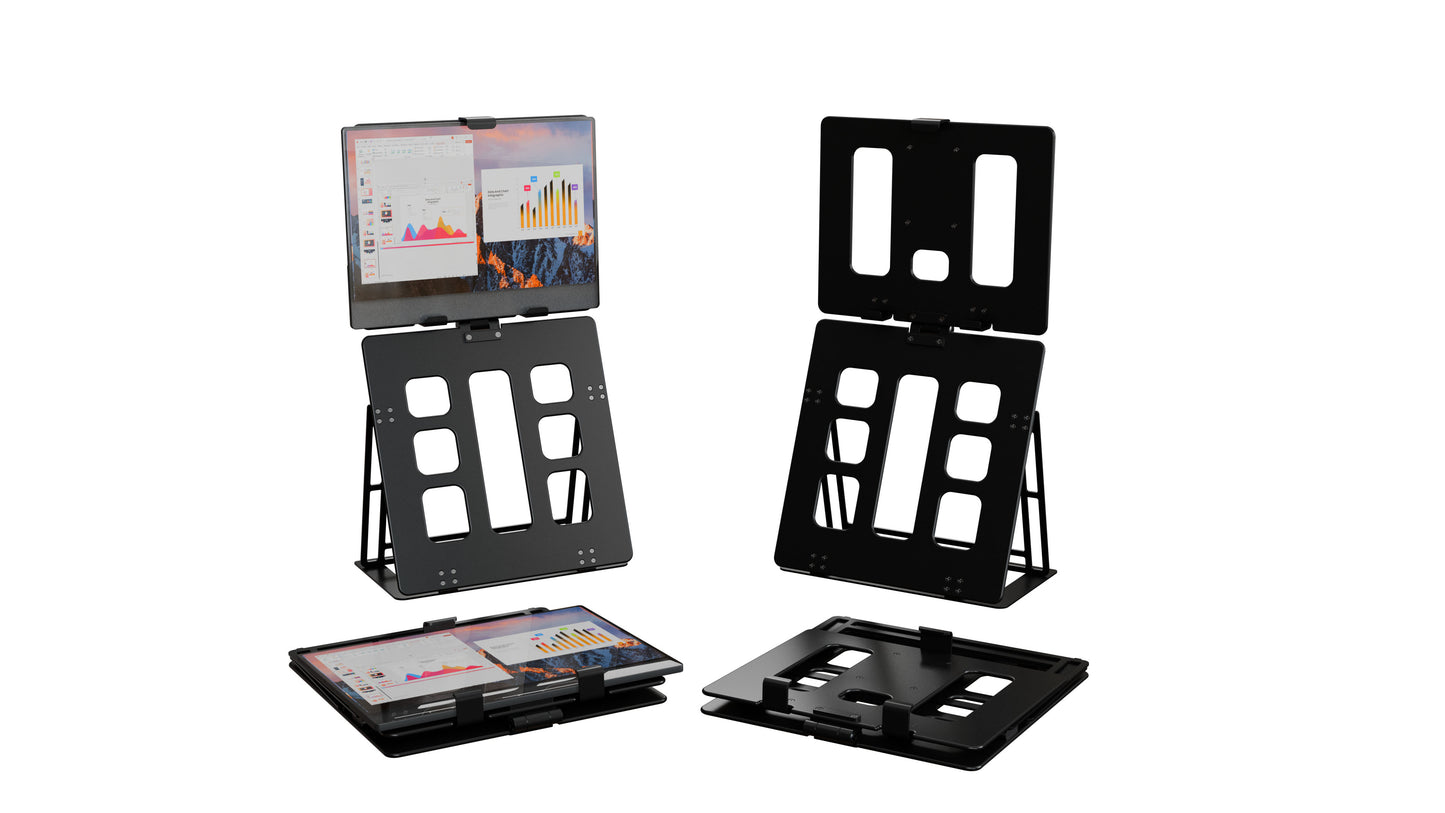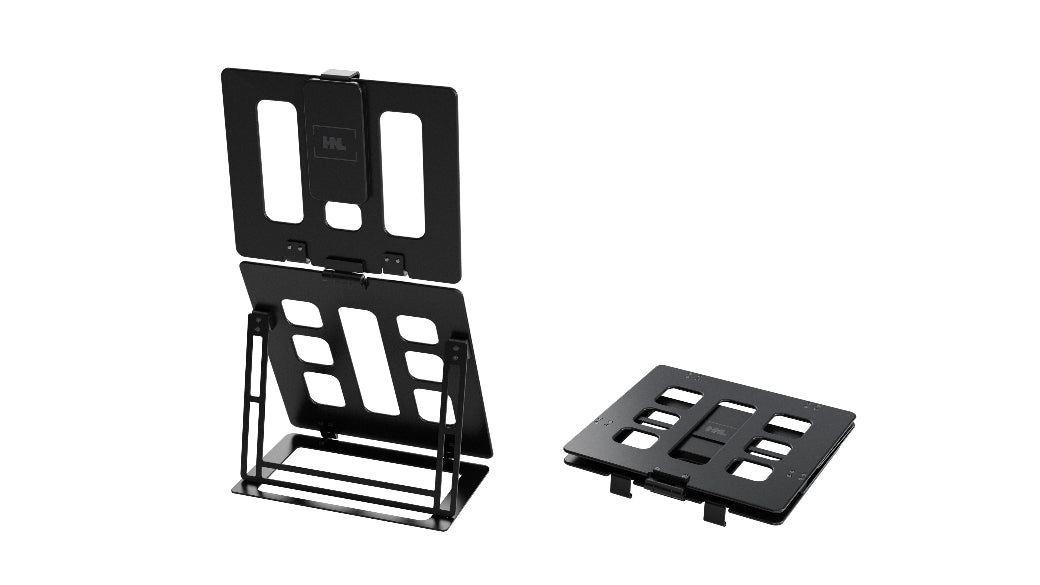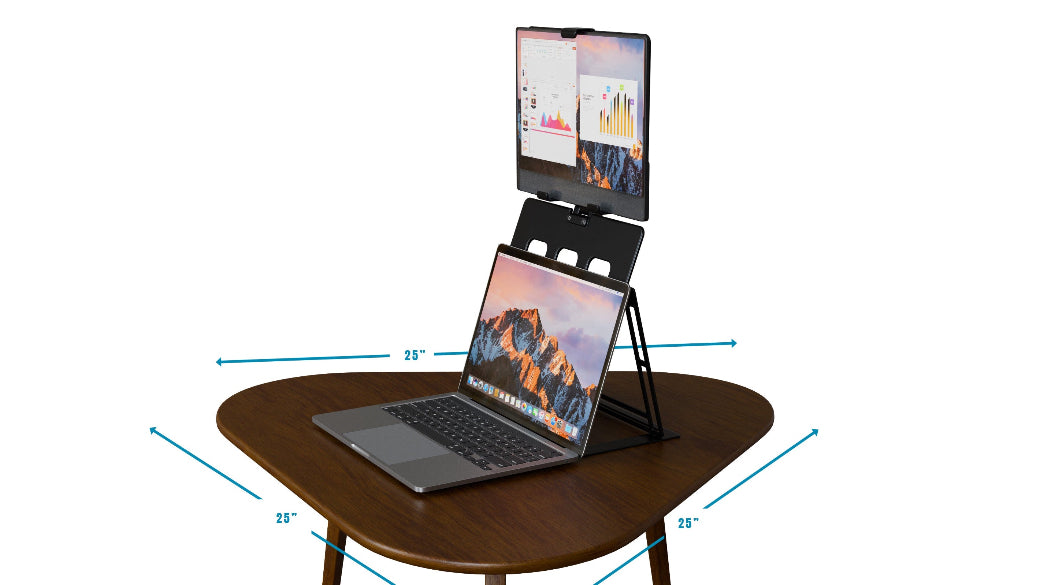
Daily Stretching & Desk Setup: The Combo Your Body Will Thank You For
Share
In today's fast-paced corporate environment, particularly prevalent in booming business centers and industrial zones across Haryana, prolonged sitting has become an undeniable reality for countless professionals. However, the solution isn't just about moving more; it's about moving smarter and supporting your body even when stationary. This blog will explore the powerful synergy between incorporating a simple desk stretching routine and optimizing your desk setup.
This combination is the holistic wellness strategy your body will truly thank you for, offering a proactive approach to posture awareness, alleviating back stretches and neck pain, and fostering healthy ergonomic break habits.
The Unseen Dangers of Prolonged Sitting
Our bodies are designed for movement, not prolonged static postures. When we sit for extended periods, several detrimental physiological changes occur:
- Muscle Imbalance: Certain muscles (like hip flexors, hamstrings) shorten and tighten, while others (like glutes, core muscles) lengthen and weaken.
- Reduced Blood Flow: Static postures impede circulation, leading to stiffness, fatigue, and even increased risk of cardiovascular issues.
- Spinal Compression: The lumbar spine bears significant load when sitting, often leading to disc compression and exacerbated back pain.
- Forward Head Posture: Straining to view screens leads to a "tech neck," causing chronic neck pain and headaches.
- Repetitive Strain Injuries (RSIs): Constant mouse and keyboard use without breaks or proper alignment can lead to carpal tunnel syndrome or similar issues.
These issues are not just discomforts; they are precursors to more serious workplace injury prevention challenges that can impact productivity, employee morale, and ultimately, a company's bottom line.
The Power of a Purposeful Desk Stretching Routine
Incorporating short, frequent stretching breaks throughout your workday is one of the most effective, low-cost ways to combat the negative effects of sitting. These aren't intense workout sessions, but rather gentle movements designed to counteract the common postural distortions induced by desk work.
- Improved Circulation: Stretching helps pump blood to muscles and joints, reducing stiffness and fatigue.
- Enhanced Flexibility and Range of Motion: Regular stretches prevent muscles from shortening and improve joint mobility.
- Pain Reduction: Targeted stretches can alleviate common complaints like neck pain, shoulder tension, and lower back pain.
- Increased Energy and Focus: Movement helps break up mental fatigue, improving alertness and concentration.
- Stress Reduction: The act of taking a mindful break and stretching can serve as a mini-meditation, reducing stress levels.
For individuals and organizations promoting HR wellness leads and engaging corporate trainers, integrating these routines into daily work habits is a powerful step towards a healthier workforce.
The Indispensable Role of an Optimized Desk Setup
While stretching is crucial, its effectiveness is significantly amplified when paired with an ergonomically optimized desk setup. Imagine repeatedly stretching a tight muscle, only to put it back into the exact same strained position for hours. A poor setup can quickly undo the benefits of stretching. This is where the right equipment comes into play, supporting posture awareness and preventing strain from the outset.
An ideal setup supports the body's natural alignment, reducing static load and promoting dynamic movement. Key elements include:
- Proper Monitor Height: Reduces neck strain (your neck will thank you!).
- Ergonomic Keyboard and Mouse: Prevents wrist and hand RSIs.
- Supportive Chair: Maintains lumbar curve and promotes healthy sitting posture.
- Standing Desk: Allows seamless transition between sitting and standing, inherently promoting movement.
The Synergistic Wellness Combo: Stretching + Smart Setup
The true magic happens when you combine consistent daily stretching routines with an intelligently designed desk setup. This creates a holistic approach to musculoskeletal health that is both preventative and restorative.
| Wellness Component | Benefit of Daily Stretching Routine | Benefit of Optimized Desk Setup | Synergistic Outcome (Why the Combo Works) |
|---|---|---|---|
| Posture | Counteracts slouching and stiffness, reminding the body of correct alignment. | Provides physical support for neutral spine and joint alignment, reducing static strain. Eliminates the need to slouch. | Stretching "resets" posture, and the optimized setup makes it easy to maintain, creating lasting posture awareness and reducing the effort required to sit or stand correctly. |
| Pain Relief | Actively releases tension in tight muscles (e.g., neck pain, back stretches for lumbar support). | Reduces the root causes of pain by preventing prolonged strain and awkward positions. E.g., a standing desk reduces continuous spinal load. | Stretching provides immediate relief, while the setup prevents re-aggravation, leading to sustained comfort and significantly impacting workplace injury prevention. |
| Energy Levels | Boosts circulation and wakes up the body, combating mental and physical fatigue. | Supports dynamic movement (e.g., through a standing desk), preventing energy dips from prolonged sedentary behavior. | Movement combined with supportive positioning keeps energy consistent, enhancing focus and productivity throughout the workday. |
| Injury Prevention | Improves flexibility and strengthens weak muscles, making the body more resilient to strain. | Minimizes hazardous postures and repetitive strain on joints and tendons, reducing the risk of developing chronic conditions. | This integrated approach significantly lowers the risk of developing RSIs and other musculoskeletal issues, crucial for long-term employee health and well-being. |
| Mental Well-being | Provides mindful breaks, reducing stress and improving focus. | Creates a comfortable, efficient environment that reduces frustration and cognitive overload, leading to greater job satisfaction. | The physical comfort and mental clarity from this combo reduce overall stress, fostering a positive work environment. |
Data based on ergonomic principles and physical therapy recommendations for office workers.
Conclusion
In an era where employee well-being is increasingly recognized as a cornerstone of corporate success, integrating daily stretching and desk setup optimization is no longer a luxury but a strategic necessity. For companies, this means fewer sick days, higher morale, and a more engaged, productive workforce. For individuals, it means saying goodbye to chronic aches and hello to sustained energy and comfort.
At HNL-Stands, we champion holistic office wellness. Our monitor stands are crafted to seamlessly integrate into any workspace, promoting better posture, reducing strain, and enhancing daily productivity. They provide the perfect foundation for a healthier, more comfortable desk setup—supporting both focus and well-timed ergonomic breaks.
Ready to transform your well-being at work? Explore our stands and ergonomic accessories today, and start building the ultimate combo your body will thank you for. Contact us now to learn more!
FAQs
Why is daily stretching important even with an ergonomic desk setup?
While an ergonomic setup minimizes strain, prolonged static postures (even good ones) can still lead to stiffness and reduced circulation. Daily stretching actively counteracts this, improving flexibility, blood flow, and muscle balance, complementing your setup for holistic health.
What types of stretches are best for desk workers?
Focus on stretches for the neck (gentle tilts, rolls), shoulders (shrugs, arm circles), upper back (chest openers, seated twists), lower back (gentle twists, cat-cow if possible), and hips (hip flexor stretches). Small, frequent breaks for these are more effective than one long session.
How does a standing desk fit into this combo for workplace injury prevention?
A standing desk is crucial because it allows you to easily alternate between sitting and standing, breaking up prolonged static postures. This dynamic movement significantly reduces continuous pressure on your spine and joints, thereby lowering the risk of musculoskeletal issues and workplace injuries.
Will investing in ergonomic equipment truly help with chronic neck or back pain?
Yes, for many, chronic neck and back pain are directly related to poor posture and prolonged static positions. Ergonomic equipment, especially adjustable elements like monitor arms and standing desks, supports proper alignment, reduces strain, and, when combined with movement, can significantly alleviate and prevent such pain.
How can HR wellness leads encourage these ergonomic break habits in the office?
HR can encourage these habits by providing ergonomic equipment, offering short stretch breaks/classes, displaying stretching posters, using wellness apps with reminders, and leading by example. Creating a culture that values movement and well-being is key to integrating these ergonomic break habits.











